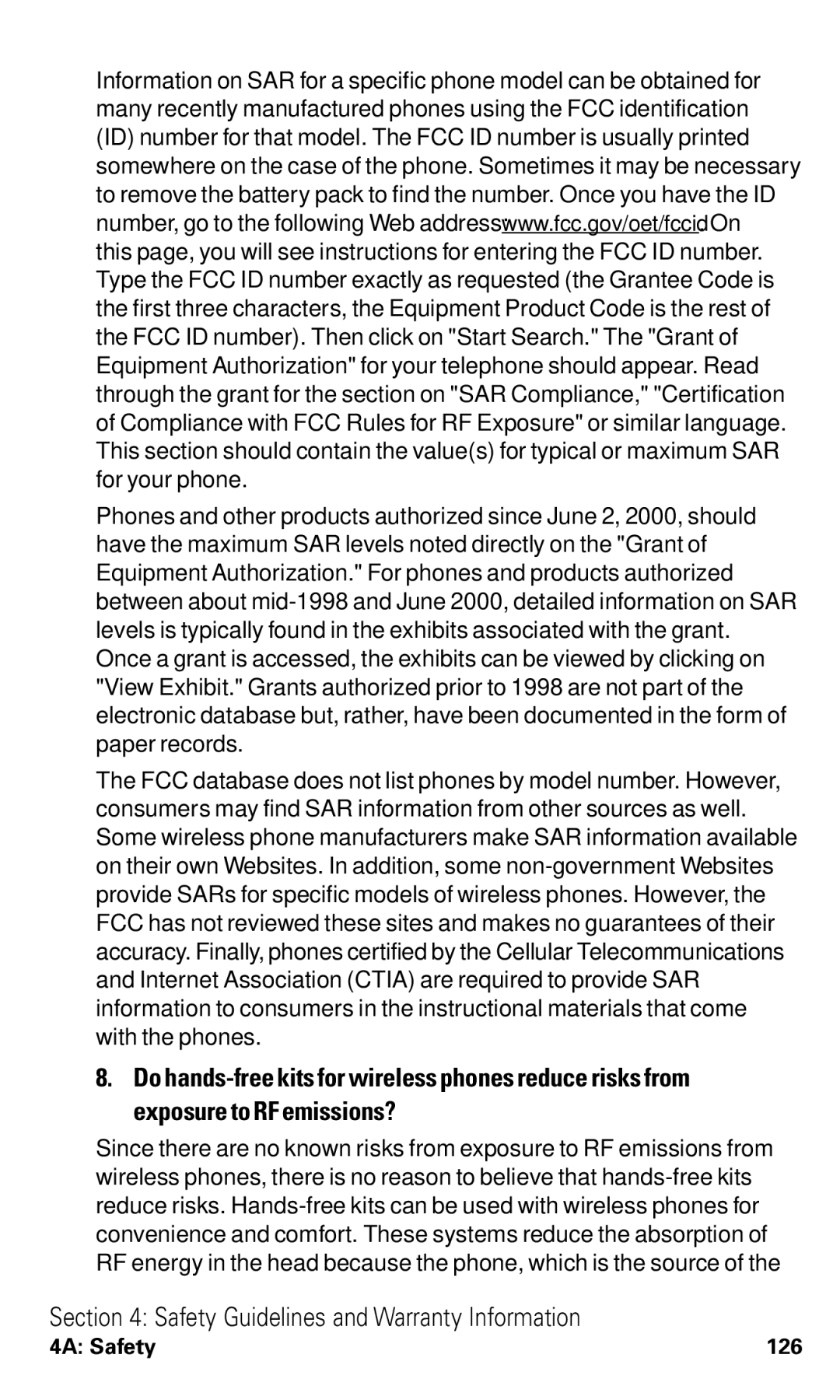Information on SAR for a specific phone model can be obtained for many recently manufactured phones using the FCC identification (ID) number for that model. The FCC ID number is usually printed somewhere on the case of the phone. Sometimes it may be necessary to remove the battery pack to find the number. Once you have the ID number, go to the following Web address: www.fcc.gov/oet/fccid. On this page, you will see instructions for entering the FCC ID number. Type the FCC ID number exactly as requested (the Grantee Code is the first three characters, the Equipment Product Code is the rest of the FCC ID number). Then click on "Start Search." The "Grant of Equipment Authorization" for your telephone should appear. Read through the grant for the section on "SAR Compliance," "Certification of Compliance with FCC Rules for RF Exposure" or similar language. This section should contain the value(s) for typical or maximum SAR for your phone.
Phones and other products authorized since June 2, 2000, should have the maximum SAR levels noted directly on the "Grant of Equipment Authorization." For phones and products authorized between about
The FCC database does not list phones by model number. However, consumers may find SAR information from other sources as well. Some wireless phone manufacturers make SAR information available on their own Websites. In addition, some
8.Do
Since there are no known risks from exposure to RF emissions from wireless phones, there is no reason to believe that
Section 4: Safety Guidelines and Warranty Information
4A: Safety | 126 |
